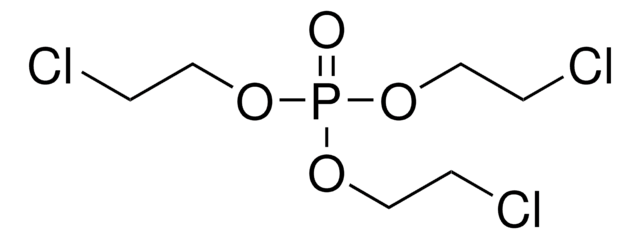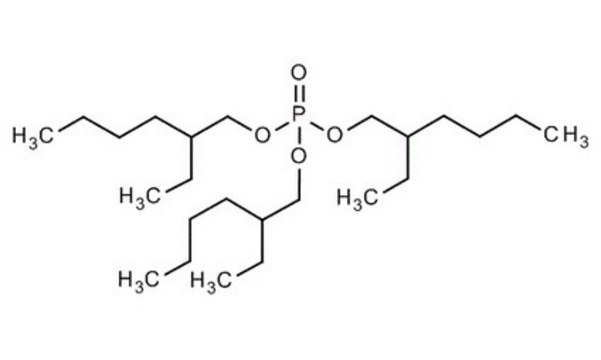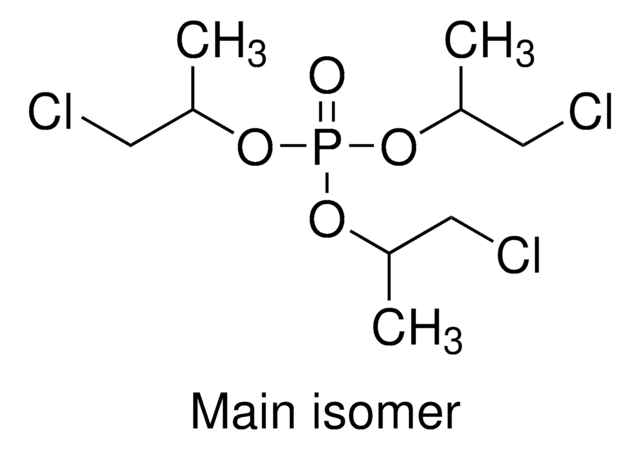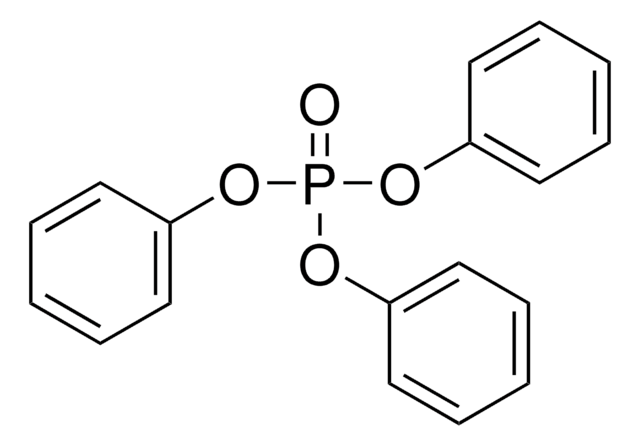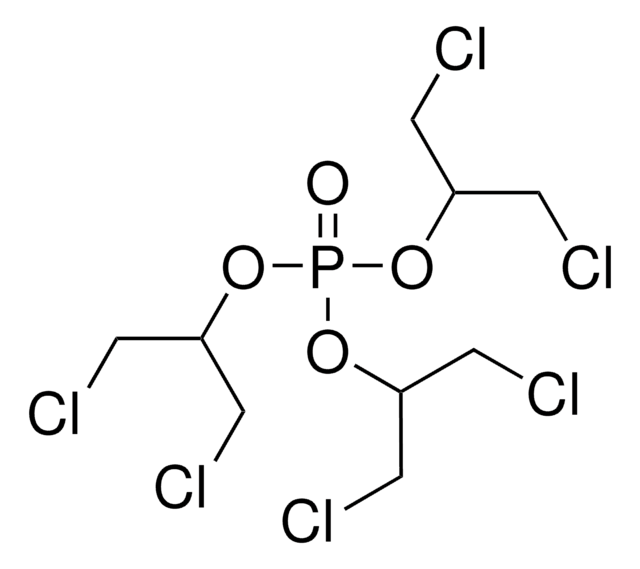289922
Tris(2-ethylhexyl) phosphate
97%
Synonym(s):
‘Trioctyl’ phosphate
Sign Into View Organizational & Contract Pricing
All Photos(2)
About This Item
Linear Formula:
[CH3(CH2)3CH(C2H5)CH2O]3P(O)
CAS Number:
Molecular Weight:
434.63
Beilstein:
1715839
EC Number:
MDL number:
UNSPSC Code:
12352100
PubChem Substance ID:
NACRES:
NA.22
Recommended Products
vapor pressure
2.1 mmHg ( 20 °C)
Quality Level
Assay
97%
refractive index
n20/D 1.444 (lit.)
bp
215 °C/4 mmHg (lit.)
density
0.92 g/mL at 20 °C (lit.)
functional group
phosphate
SMILES string
CCCCC(CC)COP(=O)(OCC(CC)CCCC)OCC(CC)CCCC
InChI
1S/C24H51O4P/c1-7-13-16-22(10-4)19-26-29(25,27-20-23(11-5)17-14-8-2)28-21-24(12-6)18-15-9-3/h22-24H,7-21H2,1-6H3
InChI key
GTVWRXDRKAHEAD-UHFFFAOYSA-N
Looking for similar products? Visit Product Comparison Guide
General description
Tris(2-ethylhexyl) phosphate exhibits glucocorticoid receptor (GR) antagonistic activity.
Signal Word
Warning
Hazard Statements
Precautionary Statements
Hazard Classifications
Skin Irrit. 2
Storage Class Code
10 - Combustible liquids
WGK
WGK 2
Flash Point(F)
338.0 °F
Flash Point(C)
170 °C
Personal Protective Equipment
dust mask type N95 (US), Eyeshields, Gloves
Choose from one of the most recent versions:
Already Own This Product?
Find documentation for the products that you have recently purchased in the Document Library.
Michihiro Kamijima et al.
[Nihon koshu eisei zasshi] Japanese journal of public health, 52(12), 1021-1031 (2006-02-07)
2-Ethyl-1-hexanol (2E1H) is a volatile organic compound (VOC) which seldom attracts attention in Japan. This study aimed at clarifying changes in its concentration over time, emission sources, and students' symptoms in classrooms of a university building where indoor air was
René González-Albarrán et al.
Environmental pollution (Barking, Essex : 1987), 258, 113474-113474 (2019-12-21)
Recently polymer inclusion membranes (PIMs) have been proposed as materials for passive sampling, nonetheless a theoretical base to describe the mass transfer process through those materials, under such conditions of monitoring, has not been elucidated. Under the assumption that: (i)
Hiroyuki Kojima et al.
Toxicology, 314(1), 76-83 (2013-09-21)
Various organophosphate flame retardants (OPFRs) are widely used in building materials, textiles and electric appliances, and have been reported to cause indoor environmental pollution in houses and office buildings. In this study, using cell-based transactivation assays, we characterized the agonistic
M B Gholivand et al.
Analytica chimica acta, 584(2), 302-307 (2007-03-28)
A novel potentiometric zirconium--PVC matrix membrane sensor incorporating bis(diphenylphosphino) ferrocene as an electroactive material and tris(2-ethylhexyl)phosphate as solvent mediator is described. In mixed acetate buffer solution of pH 4.8, the sensor displays a rapid and linear response for zirconium ion
W M Kluwe
Environmental health perspectives, 65, 271-278 (1986-03-01)
Chronic toxicity and carcinogenicity studies of several phthalic acid esters (PAEs) and compounds containing a 2-ethylhexyl moiety were conducted in Fischer 344 rats and B6C3F1 (hybrid) mice. The compounds studied were phthalic anhydride, di(2-ethylhexyl) phthalate, butyl benzyl phthalate, diallyl phthalate
Our team of scientists has experience in all areas of research including Life Science, Material Science, Chemical Synthesis, Chromatography, Analytical and many others.
Contact Technical Service


